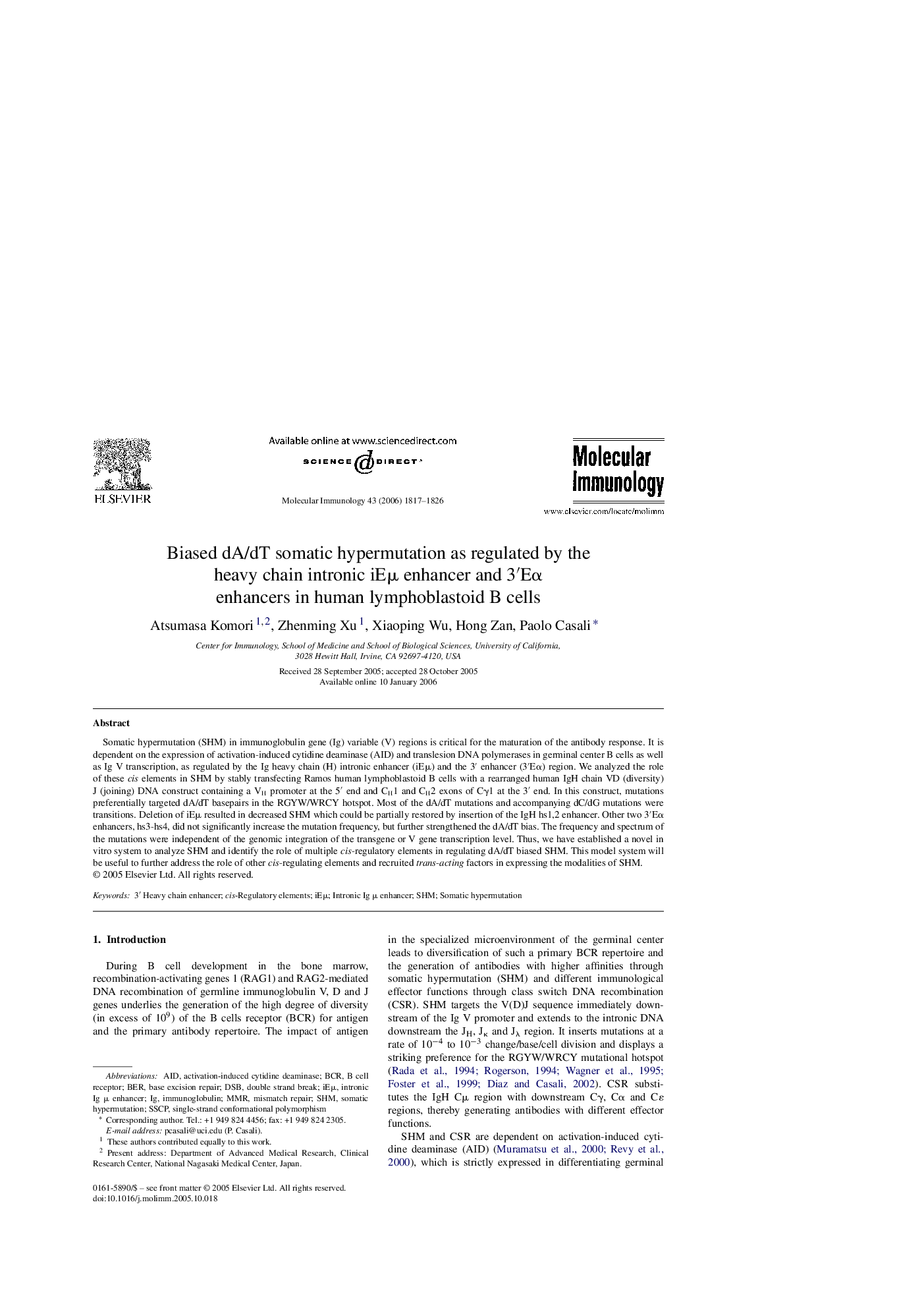| Article ID | Journal | Published Year | Pages | File Type |
|---|---|---|---|---|
| 2833443 | Molecular Immunology | 2006 | 10 Pages |
Somatic hypermutation (SHM) in immunoglobulin gene (Ig) variable (V) regions is critical for the maturation of the antibody response. It is dependent on the expression of activation-induced cytidine deaminase (AID) and translesion DNA polymerases in germinal center B cells as well as Ig V transcription, as regulated by the Ig heavy chain (H) intronic enhancer (iEμ) and the 3′ enhancer (3′Eα) region. We analyzed the role of these cis elements in SHM by stably transfecting Ramos human lymphoblastoid B cells with a rearranged human IgH chain VD (diversity) J (joining) DNA construct containing a VH promoter at the 5′ end and CH1 and CH2 exons of Cγ1 at the 3′ end. In this construct, mutations preferentially targeted dA/dT basepairs in the RGYW/WRCY hotspot. Most of the dA/dT mutations and accompanying dC/dG mutations were transitions. Deletion of iEμ resulted in decreased SHM which could be partially restored by insertion of the IgH hs1,2 enhancer. Other two 3′Eα enhancers, hs3-hs4, did not significantly increase the mutation frequency, but further strengthened the dA/dT bias. The frequency and spectrum of the mutations were independent of the genomic integration of the transgene or V gene transcription level. Thus, we have established a novel in vitro system to analyze SHM and identify the role of multiple cis-regulatory elements in regulating dA/dT biased SHM. This model system will be useful to further address the role of other cis-regulating elements and recruited trans-acting factors in expressing the modalities of SHM.
